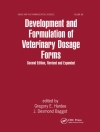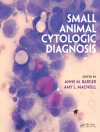Now in a revised edition, Comparative Pharmacokinetics: Principles, Techniques, and Applications presents the principles and techniques of comparative and veterinary pharmacokinetics in a detailed yet practical manner. Developed as a tool for ensuring that pharmacokinetics studies are properly designed and correctly interpreted, the book provides complete coverage of the conceptual basis of pharmacokinetics as used for quantifying biological processes from the perspectives of physiology and medicine. New chapters have been added on quantitative structure permeability relationships and bioequivalence, and a number of existing chapters have been significantly revised and expanded to provide a current resource for veterinary and comparative pharmacokinetics.
قائمة المحتويات
Coauthors.
Preface.
1 Introduction.
2 Principles of Drug Movement in the Body.
3 Quantitative Structure-Permeability Relationships
(Xin-Rui Xia).
4 Absorption.
5 Distribution (with Jennifer Buur).
6 Renal Elimination.
7 Hepatic Biotransformation and Biliary Excretion (Ronald
Baynes).
8 Compartmental Models.
9 Noncompartmental Models.
10 Nonlinear Models.
11 Physiological Models (Teresa Leavens).
12 Dosage Regimens.
13 Simultaneous Pharmacokinetic-Pharmacodynamic Modeling
(Pierre-Louis Toutain).
14 Study Design and Data Analysis. (Jason
Chittenden).
15 Bioequivalence Studies (Marilyn Martinez).
16 Population Pharmacokinetic Models (Jason
Chittenden).
17 Dosage Adjustments in Disease States (Jennifer
Davis).
18 Interspecies Extrapolations.
19 Tissue Residues and Withdrawal Times (Sharon
Mason).
Index.
عن المؤلف
Jim Riviere, DVM, Ph D, DSc (hon), ATS, is the Burroughs Wellcome Fund Distinguished Professor of Pharmacology, Alumni Distinguished Graduate Professor, and Director of the Center for Chemical Toxicology Research and Pharmacokinetics at North Carolina State University, and Editor of the Journal of Veterinary Pharmacology and Therapeutics.












